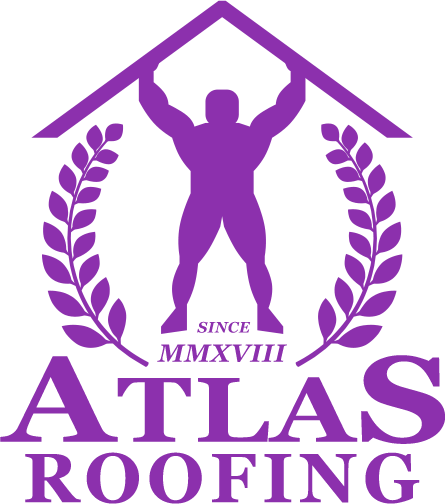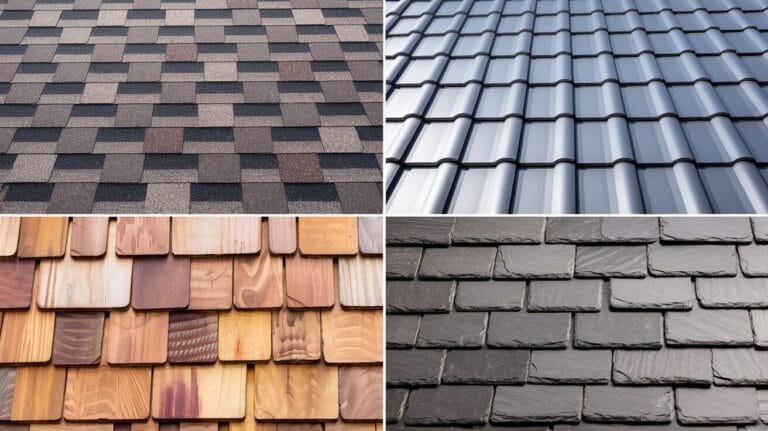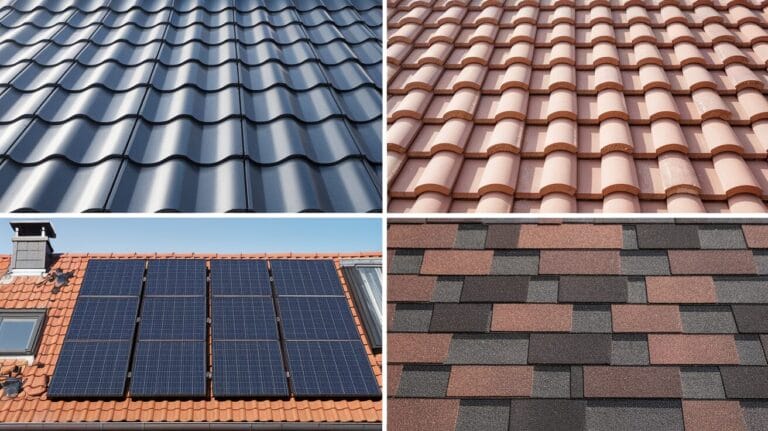
When it comes to choosing the right roof material, there are several factors to consider. From durability to aesthetics, each type of roof material has its own unique advantages and disadvantages.
Today, we will explore the different types of roof materials commonly used in construction and discuss their key features.
- Asphalt Shingles
- Metal Roofing
- Wood Shingles and Shakes
- Tile Roofing
- Slate Roofing
- Rubber Roofing
- Green Roofing
Asphalt Shingles
Asphalt shingles are one of the most popular and widely used roof materials. They are known for their affordability, versatility, and ease of installation. Asphalt shingles are made from a combination of asphalt and fiberglass, which provides durability and weather resistance.
These shingles come in a variety of colors and styles, allowing homeowners to achieve the desired look for their homes. They are also available in different grades, with higher grades offering longer warranties and better performance.
However, asphalt shingles may not be the best choice for homes in areas with extreme weather conditions, as they may not provide adequate protection against strong winds or hail.
Metal Roofing
Metal roofing has gained popularity in recent years due to its durability and energy efficiency. It is available in various metals, such as steel, aluminum, and copper. Metal roofs are resistant to fire, rot, and insect damage, making them a long-lasting option.
One of the key advantages of metal roofing is its reflective properties, which can help reduce energy costs by keeping the interior of the home cooler during hot summer months. Additionally, metal roofs are lightweight, so they can be installed over existing roofs without the need for extensive structural modifications.
However, metal roofs may be more expensive upfront compared to other materials, and some homeowners may not prefer the look of metal on their homes.
Wood Shingles and Shakes
Wood shingles and shakes provide a natural and rustic charm to a home. They are typically made from cedar, redwood, or pine and are known for their beauty and weather resistance. Wood shingles are machine-cut, giving them a more uniform appearance, while wood shakes are hand-split, resulting in a more textured and rustic look.
However, wood shingles and shakes require regular maintenance, such as periodic cleaning and sealing, to prevent rot and mold growth. They are also more susceptible to fire compared to other materials, so homeowners in fire-prone areas may need to take additional precautions. Despite these drawbacks, many homeowners choose wood shingles and shakes for their timeless appeal and eco-friendly nature.
Tile Roofing
Tile roofing is known for its durability and classic appearance. It is commonly made from materials like clay or concrete and is available in a range of colors, shapes, and styles. Tile roofs are resistant to fire, rot, and insect damage, making them a popular choice in regions with hot climates.
While tile roofs can withstand harsh weather conditions, they are heavier than other roof materials and may require additional structural support. The cost of installing a tile roof can also be higher compared to other options. However, the longevity and aesthetics of tile roofing make it an attractive option for homeowners seeking a durable and timeless roof.
Slate Roofing
Slate roofing is considered one of the most durable and long-lasting roof materials available. It is made from natural slate stone, which gives it a unique and elegant appearance. Slate roofs can last for over a century and are highly resistant to fire, rot, and insect damage.
However, the high cost of slate roofing is a major consideration for homeowners. In addition, slate is heavy and requires careful installation by experienced professionals. Nonetheless, if budget is not a constraint and longevity is a priority, slate roofing can be an excellent choice.
Rubber Roofing
Rubber roofing, also known as EPDM (ethylene propylene diene monomer) roofing, is a durable and flexible material that offers excellent protection against leaks. It is commonly used for flat or low-sloped roofs in both residential and commercial buildings.
Rubber roofs are relatively easy to install and require minimal maintenance. They are resistant to UV radiation and extreme weather conditions. Additionally, rubber roofing is an eco-friendly option, as it can be made from recycled materials.
One drawback of rubber roofing is its aesthetic appeal. Some homeowners may not appreciate the look of a rubber roof on their homes, especially in residential areas where traditional roofing materials are more common.
Green Roofing
Green roofing, also known as living roofs or vegetative roofs, is an environmentally-friendly option that offers numerous benefits. It involves covering the roof with vegetation, such as grass, plants, or even trees. Green roofs provide insulation, reduce stormwater runoff, and improve air quality.
However, green roofing requires careful planning and design to ensure proper drainage and structural support. It may also require additional maintenance, such as regular watering and pruning. Green roofs are more commonly seen in commercial buildings, but they are becoming increasingly popular in residential settings as well.
Your Takeaway
Choosing the right roof material is a crucial decision for homeowners. Consider factors such as durability, aesthetics, cost, and maintenance requirements when making your selection. Consult with a roofing professional to determine the best option for your specific needs and location. Remember, a well-chosen roof material can enhance the curb appeal, protect your home, and provide peace of mind for years to come.



